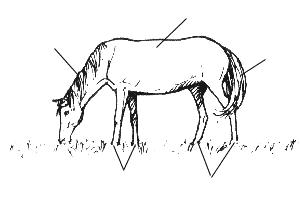In today's post I would like to talk about such an interesting and popular topic among anglers as making your own fishing weights at home. Judge for yourself: hooks, lures, wobblers, fishing lines and other important elements of tackle are either impossible make at home, or these are very complex, labor-intensive operations (which is easier to buy). And here make your own sinkers nothing easier and more profitable!
So the main one material for homemade sinkers - lead. Sometimes lead alloys with the addition of tin, cupronickel, etc. are used. But in general, lead is the basis. Lead combines several important qualities that provide it with leadership and complete hegemony in the fishing sinker segment:
— High specific gravity. Those. with the same volume, a sinker made of lead is much heavier than one made of steel, tin, aluminum and other popular inexpensive metals.;
- Quite low melting point - 327.4 ° C. Which is fully ensured by the fire of the fire, gas burner or slabs;
— Normal machinability. And although lead is mainly poured, it is also not difficult to carry out some mechanical processing (flattening, cutting, sawing, polishing). Lead is ductile and soft.
Where can I get lead? Melt down old sinkers; use old battery plates, the protective sheath of some wires, look for other options - there are a lot of them.
 To cast sinkers yourself- need a form. I've never really bothered with mass production of sinkers. So, I made molds from scrap materials.
To cast sinkers yourself- need a form. I've never really bothered with mass production of sinkers. So, I made molds from scrap materials.
— Homemade blind bottom sinkers or weights for rubber donkeys are ideally cast in a regular tablespoon. Then, drill a hole in the top of the load and mount it on the tackle.
— Homemade sliding sinkers for donks and weights. Personally, I cast in cardboard molds (matchboxes) and in a wooden hollowed-out mold. Of course, it is better to make neater weights in plaster molds, but... I use round chisels to hollow out a recess in the shape of the weight. I cut grooves for the axle. I place a nail or a piece of wire into the recess. I melt the lead in a spoon or other container (an aluminum ladle with a handle, a tin can, etc.) and pour it into the “heaped” recess. When the load freezes, I remove the nail using pliers. It turns out great homemade sinker for donkey.


 Can you do it quickly? make an eared eccentric weight for spinning fishing. Just twist the ears out of wire and clamp an ordinary seal of the required weight onto them.
Can you do it quickly? make an eared eccentric weight for spinning fishing. Just twist the ears out of wire and clamp an ordinary seal of the required weight onto them.
If you are going to cast sinkers thoroughly and in large quantities, you can get steel or plaster molds for casting sinkers. So, you can make plaster molds yourself. For the sample, use commercially produced sinkers.
For home-made eared sinkers they use homemade factory molds made of steel.


A little on the safety of making lead weights yourself. Lead fumes are harmful. So, if you are casting a serious batch of sinkers, do it outdoors or indoors with good ventilation. But if you cast literally a few weights and not often, then you can do this with a regular gas oven Houses. Just be careful not to spill hot lead on yourself and the decoration of the apartment, furniture... Go for it!
The sinker is one of the important components of your equipment; almost no equipment can do without it. And on top of all this, sinkers often break off and get lost, which means it can be classified as a consumable that does not last very long.
If you are a DIYer, then this article is definitely for you. Because there are a couple of advantages to casting sinkers yourself
Firstly, it is versatility; you can always make the necessary sinker of any shape and weight.
Secondly, this is a small savings. Lead is very available material and you can get it anywhere, for example, I take it from the nearest car service center, from tire fitters. You just need to buy plaster, which costs around 80 rubles. for 5 kg.
Step-by-step instructions for making a casting mold
Making sinkers is not a long or complicated process, but you probably know that every business has its own tricks and nuances. Go!
First we need to prepare everything we need:
- Container;
- Construction plaster or alabaster;
- A sample of a sinker or a sample of any other material;
- Lubricant (soap solution, etc.);
- Lead (in my case these are weights for balancing wheels);
We begin our process by preparing the sinker and container for filling with gypsum. First, we take the sinker and make 2 holes on the same line along the length of the sinker and insert 2 metal rods there. We need them to fix the sinker inside the container. The sinker must be fixed parallel to the bottom of the container, or level, so that the plaster hardens evenly, without large angles or differences.


The sinker is fixed, now we mix the plaster. I experimented a lot, did 1 to 1, mixed with PVA glue, etc. By the way, the photographs are different and all are almost unsuccessful molds. So, in the end we got an ideal shape that does not crumble even without the use of PVA glue. I just mixed the plaster well in a 2:1 ratio with water, there is no need for unnecessary movements and the plaster is liquid enough to cast even small figures with complex shapes.
It is also advisable to reinforce the form with construction sickle so that it lasts longer.

After the mold has set and dried a little (about 30 minutes), you can make locks to connect the two halves. I did it with an ordinary knife. They can also do it with the help of drills and other objects, tools, nails, mice, in short, whatever comes to hand. Why better knife? Because the locks will be in the shape of a cone, which in my opinion is more convenient due to the fact that you can easily dismantle the 2nd half immediately after it has set, which cannot be done if the lock is in the shape of a cylinder (after the drill).
Are the castles ready? Now let's lubricate the mold and locks with soapy water twice as much. They smeared it once, then again after a couple of minutes. Lubricate the locks thoroughly.
Personally, I did it using homemade lubricant from vegetable oil and a candle. It turned out much more effective. To make it, I microwaved the oil and crushed candle in a plastic container and waited until it completely melted. Next, I mixed it well and spread it in one layer on the mold.

Now wait until the lubricant separator hardens and fill the other half with the same solution. I added a green color to make them visually different.

Wait 30 minutes in the same way and carefully bend the sides of the container and remove the molds. The molds will be quite fragile, if you want you can wait longer for them to dry.
Next, we make a couple of small channels for air removal and the main channel for pouring lead. Also, if you want to make a sliding sinker, make a through channel for a nail, for example. And if you need to fill with a swivel, just make a small hole at the junction.
The main task after you take them out and make all the necessary channels will be drying them. Give her some time Special attention, since pouring lead into a poorly dried mold is very dangerous, it may simply spit the lead back out. And God forbid it gets into your hands, or worse, into your eyes. And be sure to follow TB rules.
You can dry the molds at home in the oven in several stages. Stage 1 drying at a temperature of 15-25 degrees for about 20 minutes. Stage 2 drying at a temperature of about 40 degrees for 10 minutes. AND The final stage- drying at temperatures up to 70 degrees for about 10 minutes. Do not dry at very high temperatures, the gypsum may lose its structure and become crumbly like sand. If you feel that the form is still damp, set it to dry for 15 minutes at a temperature of 50-60 degrees.

Step-by-step instructions for casting a sinker
The form is ready. All that remains is to prepare the lead and pour it. I took wheel balancing weights and cut them into small pieces so that it would melt faster. Of course, you don’t have to do this, since there have never been any problems even with fairly large weights.


You can melt lead at gas stove in a regular tin can, or using a gas burner. We pour molten lead into the main channel. Be sure to wear gloves and use pliers!
A sinker is an integral part of almost any fishing tackle that is used to cast and hold bait on required depth. Therefore, the question of how to make a fishing sinker yourself sooner or later arises before any fisherman.
In ancient times, fishermen used ceramic or stone weights. Now lead is used to make fishing sinkers - as the heaviest of metals (gold and platinum are not taken into account). Specific gravity lead 11.3 g/cm³. This is one and a half times heavier than iron and four times heavier than stone.
In addition, lead has other qualities necessary for the manufacture of fishing sinkers:
- firstly, lead is a low-melting metal (melting point 327°C), which allows you to melt it at home - on a gas, electric or wood-burning stove.
- secondly, lead is a non-ferrous metal and it practically does not corrode.
- thirdly, lead is a soft metal, which makes it easy to machine at home.
In ancient and medieval times, lead was used to make water pipes and dishes, Our ancestors did not know that lead is poison. This is well known today, so when using lead fishing weights there is no need to use your teeth as cutters or pliers.
Depending on the conditions of use, fishing sinkers can have different shapes, designs and weights. The weight of sinkers ranges from hundredths of a gram to many kilograms.
I will not go into the specifics of sinkers associated with specific gear and application features. The main task is to show that any angler can make almost any sinker at home, without using industrial equipment. What is needed for this?
First, you need lead. The main sources of its extraction are old batteries (car, computer and others) and communication cables shielded with lead.
Secondly, you need a crucible - a container for melting lead. As a crucible, I use a metal tin can with a capacity of 350 ml. It is better to take flat jars rather than tall ones. Using pliers, you need to form a “spout” on the can for a more accurate pour. This jar contains about 4 kg of molten lead. The jar of molten lead is removed from the burner using pliers with plastic handles.
Thirdly, you need a casting mold - a container into which molten lead will be poured and, solidifying in it, will give the final shape to the sinker. You will also need regular plumbing tools.
You can use, for example, spoons as a form. A sinker cast in a teaspoon will weigh about 50 grams, in a dessert spoon about 100 grams, and in a tablespoon about 150 grams. True, for damaging spoons you can get your wife in the neck.
You can take any object and press it into the ground or sand. True, a sinker cast in this form will not have a very presentable appearance.
I will talk about the two materials from which it is easiest to make an injection mold for casting lead fishing sinkers - cardboard and wood. The easiest way to make a sinker for bottom tackle is to cast it in a matchbox. Despite all its apparent fragility, the matchbox can withstand a couple of castings. If you wet it and wipe it dry, it will withstand more filling cycles.
Almost all fishing sinkers can be divided into two groups. The first group is sliding weights, which slide freely along the fishing line. For this purpose, a through longitudinal hole is used. The second group is tightly secured sinkers. Such sinkers are attached to a specific place on the rig. For fastening, such sinkers have either a hole or a wire eye. It is better to make a wire eyelet from stainless wire using round nose pliers and pliers.

Mold for casting a fishing sinker,
made from matchbox
The photo shows injection molds made from a matchbox. On the left is for a sinker with a blind mount, and on the right is for a sliding sinker. To form longitudinal hole a gypsy needle is used, which, after the sinker has cooled, is “twisted” out of it using pliers.
From cardboard you can make disposable molds for casting flat weights of a different configuration.
More durable forms can be made from wood.

Team wooden mold for casting sinkers
The photo shows a prefabricated wooden mold (of four parts) and a sinker cast in it. To make an injection mold, it is better to take wood species such as poplar or linden. They are easy to process and do not chip. The form is assembled using wood screws.

The mold for casting sinkers is assembled using self-tapping screws

Sinker cast in a wooden mold
If you need to make a voluminous sinker, you can’t do without a split mold, which is also easy to make at home. You can use a ready-made sinker as a model. If there is no sinker, you need to make a model of it. This is best done using a thin sharp knife made from a piece of soap, paraffin or wax. Then, using the finished model, you need to make an injection mold. This is done like this:
— take a small box (you can, for example, a disposable plastic food container);
— construction plaster (alabaster) is diluted and half filled into the box;
— a thin film from the small one is placed on top (as a separating material) plastic bag, two “pins” are stuck in - they will serve as guides when connecting the halves of the form;
— the sinker model is pressed in halfway (accuracy is important here, otherwise the shape will not be understood later);
- the form is filled to the top with alabaster solution (the main thing here is not to rush, so that there are no cavities or cavities in the form);
- when the mold hardens, the two halves are separated, the model is removed, the film is torn off and thrown away, the dots are left in one half of the mold;
- if the model did not have a sprue, it is made (for example, using a drill). The casting channel is made thin (depending on the size of the sinker) at the sinker, where it will subsequently be bitten off, and wide, funnel-shaped at the top. This is necessary to store molten lead during cooling and shrinkage;
- if there are shells left on the body of the mold, they must be wiped away with a liquid solution of alabaster. After complete drying, the form must be sanded. emery cloth and soak in Vaseline oil and dry.

Two Piece Plaster Casting Mold for Fishing Sinkers

Plaster mold for sinkers with sprue
Before pouring, both halves of the mold are connected and compressed (for example, with a clamp).
Whatever the mold for casting fishing sinkers is made from at home, finished products defects are inevitable. First of all, this is flash - excess metal during casting. They are removed using a file or a hard, sharp knife (lead can be easily scraped).
Here is the ABC of making fishing sinkers with your own hands.
In today's difficult economic environment, it is worth thinking about self-production tackles and their accessories at home. Moreover, some necessary equipment It's very easy to make for fishing. Let's look at the process of making fishing sinkers.
To prepare for the manufacture of lead weights, we will need:
First we have to make a mold for casting lead sinker.
Making a mold for casting lead weights
Nothing complicated to make forms There are no weights for casting and even a child can do it. Now in detail and one by one about how to make a mold for filling sinkers.
1. Take the first one a plastic cup and cut it as shown in the photo.
2. Cut off the second cup. 
3. Cut out the bottom with a heated knife or scalpel. 
4. The cut part of the second cup with the bottom cut out should fit into the first cup as in the photo. 
5. This is how the sinker for front-loaded spinners will be placed. 
6. To lay the sinker, we will have to make a slot in the wall of the cup with a gap for the thickness of the wire lead of the sinker. 
7. This is what it should look like. 
8. Take gypsum powder and dilute it with water. Fill the first glass halfway with gypsum solution. All operations with plaster should be done quickly. Unlike cement, it sets quickly. 
9. To add rigidity to the structure, we lay a mesh to seal the seams between the plasterboard slabs. 
10. Fill the mesh with plaster up to the edge of the cup. 
11. We wait until the solution begins to set and then place a sinker in the center so that it is immersed in the gypsum solution to half its thickness. 
12. Wait for it to dry completely, this takes about 30 minutes. 
13. Using a knife or scalpel, we make holes around the perimeter for proper alignment of the finished halves of the mold (you can use a drill and a drill bit). 
14. Take liquid soap and apply it to the first part of the mold. This must be done to prevent the parts of the form from sticking together. Liquid soap can be replaced with any lubricant. 
15. Insert the cut cup with a slot for the leash in the same way as in the photo. 
16. Secure it with tape or tape. 
17. Fill it up to half the height with gypsum solution. 
18. Don’t forget to lay the mesh for rigidity. 
19. Fill to the end. 
20. Wait for the second half of the mold to dry completely for 30 minutes and separate both parts. 
21. It will look like this. 
22. Cut and remove the cups from the plaster parts of the mold for casting the sinkers. 
23. Using a scalpel or knife, carefully pry up the sinker and pull it out. 

24. The exact shape of the first half of the sinker should be like this. 
25. This is what both parts of the form look like for sinkers. But it’s too early to consider them ready. Our form still lacks a channel for pouring lead and a channel for air outlet (for communication with the atmosphere); it is needed to prevent the formation of pores and cavities. Last channel must be of very small diameter otherwise it will be filled with a large amount of lead. There is no need to rush to make these two channels. It is better to do them in a day, the plaster will be even stronger after this time. 
26. On another form you can see these channels. 
27. This is what the filler hole should look like from the outside when both parts of the mold are aligned. 
28. Channels can be easily made with a scalpel or drilled with a drill. 
29. We are finalizing the first part of the form for laying the leash with an eye. 
30. Check the fit of the parts. 
31. We make notches at the ends to secure the parts with an elastic band. This will make the process of casting the sinker easier. 
32. Now ours form ready and you can proceed to casting the sinkers. 
Casting a lead sinker into a homemade plaster mold
Casting sinkers into a plaster mold is very simple and quick.
1. Take a mold that contains a wire leash with an eye and pour in molten lead. In the photo, the form is in the hands, this should not be done. 
2. Lead is poured until it fills the entire cavity. 
3. After cooling, disassemble the mold. 
4. We take out the sinker. 
5. We process the sinker with side cutters and a needle file (file). The process of making the sinker is completed. 
In one hour you can make a large number of sinker various forms and different weights. It all depends on how many molds you have made and how much lead you have. This will save your fishing expenses. You can take lead for making sinkers from old ones. batteries or from the sheath of old electrical cables.
These articles may interest you
- Fishing in the region:
- Fishing during the seasons:
- Fishing:
The sinker is one of the consumable components of the tackle and often disappears along with the hook when biting large and strong prey. In stores, the cost of sinkers increases in direct proportion to their weight. Therefore, if catching large fish is carried out using several tackles, then purchasing sinkers becomes quite expensive.
At the same time, this element of equipment is quite simple to manufacture and practically does not require careful processing and complex preparation for use.
The material for the sinker is also quite common and accessible, so even complex sinkers can be made independently using appropriate blanks.
Simple options
The simplest thing is to make lead weights using a plaster or sand mold. This method has a number of undoubted advantages:

The use of lead and gypsum when making sinkers yourself has several significant nuances:
- at a temperature of about 200°C, water begins to actively evaporate from the gypsum, which leads to destruction of its structure and splitting of the product;
- lead is pressed into plaster when it hardens, which makes it almost impossible to remove the sinker without destroying the shape;
- gypsum blank has a large number of micropores, which leads to the need to polish the finished product.
When using sand instead of gypsum, the process of preparing the mold is greatly simplified, however, the requirements for the material of the box in which the workpiece will be located when pouring lead are increased; it is advisable to use a metal support. The product itself will be somewhat less aesthetically pleasing and will require serious polishing.
Making simple disposable molds
The fragility and destruction of the gypsum structure when water evaporates makes it difficult to use this material for reusable. However, as a disposable and easy-to-make mold, gypsum is ideal.
To make a shape for a simple sinker you need:

The most in a simple way Making a cone-shaped sinker is to use a paper cone in the sand:
- A paper blank (a piece of paper rolled into a cone) is inserted into any container tightly filled with sand, inserted into the sharp end of the cone metal loop for a sinker;
- Lead is melted and poured into a paper cone;
- Part of the cone burns, but during this time the lead has time to cool a little and begin to harden;
- The cooled workpiece is removed from the sand and processed with a file.
You can use aluminum foil instead of paper.

The material for the sinker is also quite common and accessible, so even complex sinkers can be made independently using appropriate blanks
Forms for regular use
A plaster mold, even a very well made and dried one, will sooner or later collapse and you will have to make a new one or use a product suitable for frequent use.
Of course, for repeated use, molds made of heat-resistant steel or cast iron are best suited, but making these yourself is almost impossible. But cement is good for creating a melting mold, although this will require a little work.
Materials and tools for reusable uniforms:
- formwork material (wooden boards);
- liquid soap;
- cement;
- round file;
- fine sandpaper;
- clamp;
- cylinders for inserting into the filler hole;
- wire for making loops for the sinker.

For repeated use, molds made of heat-resistant steel or cast iron are best suited, but making these yourself is almost impossible
Making a reusable cement mold
Creating a cement mold is quite time-consuming, this is due to the relatively long hardening of the mixture.
The process of creating the form itself looks something like this:
- Formwork is being made, preferably collapsible;
- The inner surface of the formwork is covered liquid soap and installed on flat surface, also treated with soapy water;
- The formwork is filled with cement mortar;
- Into cement that has not yet hardened, the desired workpiece is half-immersed;
- The cement must harden completely, this may take 1-2 days;
- After the cement has completely dried, the formwork is disassembled and reassembled for the next filling;
- The first, frozen half, together with the protruding workpiece, is greased with soap;
- The second half of the mold is prepared, cement is poured into it;
- First half with surface, covered with soapy water, is installed on the second part of the mold;
- The cement hardens again;
- After the cement has dried in both halves of the mold, with a round needle file, the central cone-shaped holes are bored out in each half for pouring lead, and two side channels are also made for air removal;
- Surface of the sinker mold processed with sandpaper;
- Before pouring the mold halves tightly fastened with a clamp.

Molds for casting several weights
For faster work, you can make molds for several weights at once. For formwork, you can use a grille from neon lamps.
When preparing a mold for multiple pieces, additional assistance may be required as you may not have time to place all the pieces before the material used has cured.
- The porosity of the plaster mold and the tendency of lead to stick when curing can be significantly reduced using chalk or talc for processing inner surface molds to fill voids and create a layer between the lead and plaster.
- To increase the service life of the gypsum mold, you can impregnate and treat it from the inside with sealant to reduce water evaporation when pouring metal. It won't be durable, but it will probably last a few more uses.
- In the manufacture of small weights to create outlet channels You can use regular matches or nails, just stick them into the mold material before it hardens.
- Instead of soap solution And vegetable oil You can use silicone grease.








